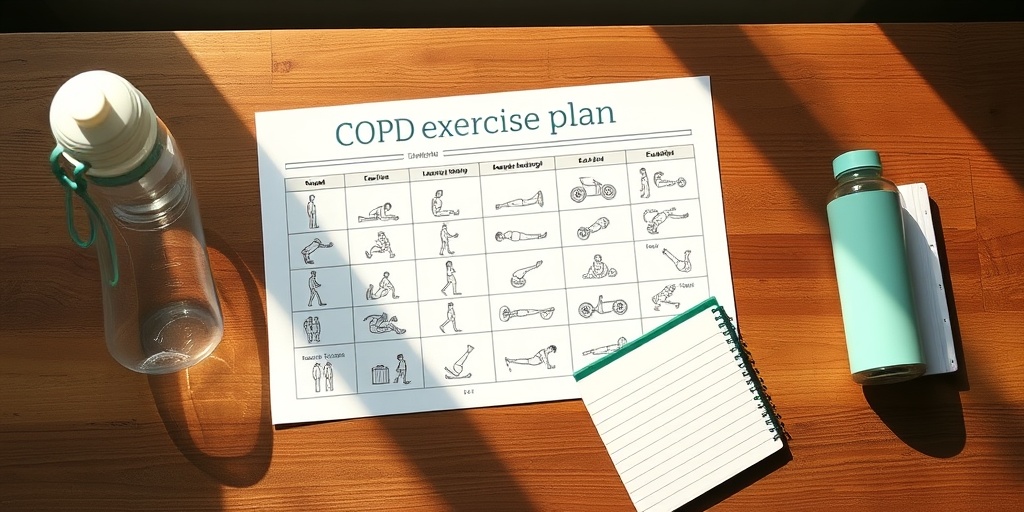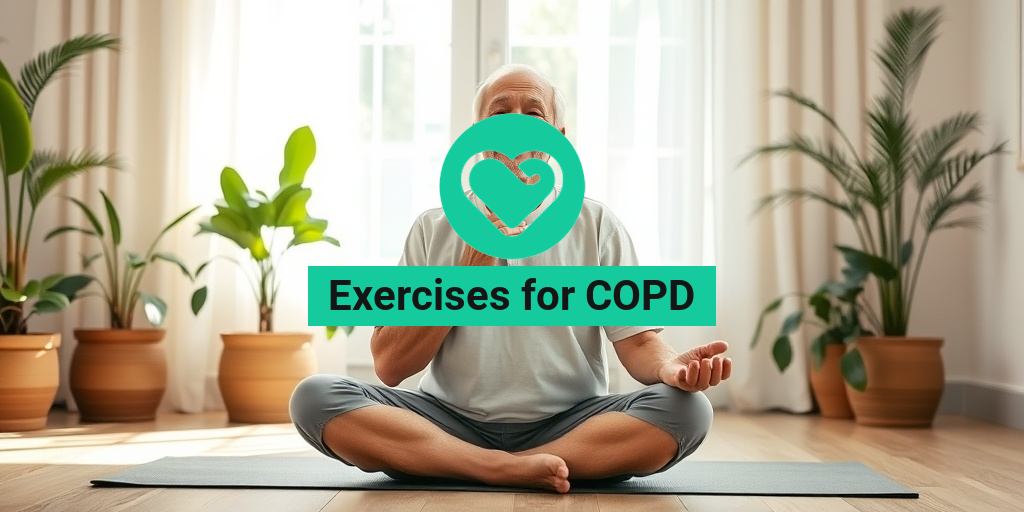What Is COPD?
Chronic Obstructive Pulmonary Disease (COPD) is a progressive lung disease that makes it difficult to breathe. It encompasses a group of lung conditions, primarily chronic bronchitis and emphysema, which cause airflow blockage and breathing-related problems. COPD is often caused by long-term exposure to irritating gases or particulate matter, most commonly from cigarette smoke. However, other factors such as air pollution, chemical fumes, and genetic factors can also contribute to its development.
According to the World Health Organization (WHO), COPD is a leading cause of morbidity and mortality worldwide. It affects millions of people, and while it is often preventable, many individuals remain undiagnosed until the disease has progressed significantly.
Understanding the Impact of COPD
The impact of COPD extends beyond just physical symptoms. It can significantly affect a person’s quality of life, leading to limitations in daily activities, increased healthcare costs, and emotional challenges such as anxiety and depression. Understanding COPD is crucial for effective management and improving the quality of life for those affected.
COPD Symptoms
Recognizing the symptoms of COPD is essential for early diagnosis and treatment. The symptoms can vary in severity and may worsen over time. Here are some common symptoms associated with COPD:
- Shortness of Breath: This is often the first noticeable symptom, especially during physical activities.
- Chronic Cough: A persistent cough that produces mucus is common in individuals with COPD.
- Wheezing: A whistling or squeaky sound when breathing, particularly during exhalation.
- Chest Tightness: Many patients report a feeling of tightness or pressure in the chest.
- Frequent Respiratory Infections: Individuals with COPD are more susceptible to colds, flu, and other respiratory infections.
- Fatigue: Chronic fatigue can occur due to the increased effort required for breathing.
Recognizing Symptoms Early
Early recognition of these symptoms is vital for effective management. If you or someone you know is experiencing these signs, it is important to consult a healthcare professional for a proper diagnosis and treatment plan. Early intervention can help slow the progression of the disease and improve overall health.
Managing COPD Symptoms
While there is no cure for COPD, various strategies can help manage symptoms and improve quality of life. One of the most effective ways to manage COPD is through exercise. Engaging in exercises for COPD can enhance lung function, increase endurance, and improve overall well-being.
For those looking for structured guidance, resources like Yesil Health AI provide evidence-based health answers and can help individuals find suitable exercises tailored to their needs.
Conclusion
Understanding COPD and its symptoms is the first step towards effective management. By recognizing the signs early and incorporating exercises for COPD into daily routines, individuals can take proactive steps to enhance their lung health and overall quality of life. Remember, you are not alone in this journey, and there are resources available to support you every step of the way! 🌟

Benefits of Exercise for COPD
Chronic Obstructive Pulmonary Disease (COPD) is a progressive lung condition that can significantly impact a person’s quality of life. However, engaging in regular exercises for COPD can provide numerous benefits that help manage symptoms and improve overall well-being. Here are some key advantages:
Improved Lung Function
One of the primary benefits of exercise for individuals with COPD is the enhancement of lung function. Regular physical activity can help strengthen the respiratory muscles, making it easier to breathe. This is particularly important for COPD patients, as it can lead to improved oxygenation and reduced shortness of breath during daily activities.
Increased Stamina and Endurance
Exercise helps build stamina and endurance, allowing COPD sufferers to engage in daily tasks with less fatigue. Activities like walking, cycling, or swimming can gradually increase your ability to perform everyday activities without becoming overly tired.
Enhanced Quality of Life
Participating in regular exercise can significantly enhance the quality of life for those living with COPD. It can lead to better mood, reduced anxiety, and improved overall mental health. The sense of accomplishment from completing an exercise routine can also boost self-esteem and motivation.
Weight Management
Maintaining a healthy weight is crucial for individuals with COPD. Regular exercise can help manage weight by burning calories and building muscle. This is particularly important, as excess weight can put additional strain on the lungs and make breathing more difficult.
Social Interaction
Engaging in group exercises or classes can provide valuable social interaction for COPD patients. This not only helps combat feelings of isolation but also encourages adherence to exercise routines. Many community centers and health organizations offer tailored programs for COPD rehabilitation.
Types of Exercises for COPD
When it comes to exercises for COPD, it’s essential to choose activities that are safe and effective. Here are some types of exercises that can benefit individuals with COPD:
Aerobic Exercises
Aerobic exercises are crucial for improving cardiovascular health and lung function. These exercises increase your heart rate and breathing, which can help improve overall endurance. Some suitable aerobic exercises for COPD patients include:
- Walking 🚶♂️
- Swimming 🏊♀️
- Cycling 🚴♂️
- Low-impact aerobics
Strength Training
Strength training is vital for building muscle mass and improving overall strength. This can help COPD sufferers perform daily activities more easily. Resistance bands, light weights, or body-weight exercises can be effective. Some examples include:
- Chair squats
- Wall push-ups
- Seated leg lifts
Flexibility and Stretching Exercises
Flexibility exercises help maintain joint health and improve overall mobility. Stretching can also aid in relaxation and reduce muscle tension. Incorporating stretching into your routine can enhance your overall exercise experience. Consider:
- Gentle yoga 🧘♀️
- Pilates
- Simple stretching routines
Breathing Exercises
Breathing exercises are particularly beneficial for individuals with COPD. They can help improve lung capacity and efficiency. Techniques such as pursed-lip breathing and diaphragmatic breathing can be practiced daily to enhance respiratory function. Here’s how to do them:
- Pursed-lip breathing: Inhale through your nose for two counts, then exhale slowly through pursed lips for four counts.
- Diaphragmatic breathing: Place one hand on your chest and the other on your abdomen. Inhale deeply through your nose, allowing your abdomen to rise while keeping your chest still.
Incorporating these exercises for COPD into your daily routine can lead to significant improvements in your health and well-being. Always consult with a healthcare professional before starting any new exercise program, especially if you have COPD or other underlying health conditions. 🩺

Breathing Techniques
For individuals living with Chronic Obstructive Pulmonary Disease (COPD), mastering effective breathing techniques is crucial. These techniques not only help in managing symptoms but also enhance overall lung function. Here, we explore some of the most beneficial breathing exercises for COPD patients.
Pursed-Lip Breathing
Pursed-lip breathing is a simple yet effective technique that can help you control your breathing and improve oxygenation. Here’s how to do it:
- Inhale slowly through your nose for about two counts.
- Purse your lips as if you are going to whistle.
- Exhale slowly and gently through your pursed lips for four counts.
This technique helps to keep your airways open longer, allowing for better air exchange and reducing shortness of breath. It’s particularly useful during physical activities or when you feel breathless. 🌬️
Diaphragmatic Breathing
Diaphragmatic breathing, also known as abdominal breathing, focuses on using your diaphragm effectively. This technique can help improve lung capacity and reduce the effort needed to breathe. Here’s how to practice it:
- Lie down on your back with your knees bent or sit comfortably in a chair.
- Place one hand on your chest and the other on your abdomen.
- Inhale deeply through your nose, ensuring that your abdomen rises while your chest remains still.
- Exhale slowly through your mouth, feeling your abdomen fall.
Practicing this technique regularly can lead to improved breathing efficiency and a greater sense of relaxation. 🧘♂️
Controlled Coughing
Effective coughing can help clear mucus from your lungs, making it easier to breathe. Controlled coughing techniques can be particularly beneficial for COPD patients:
- Sit in a comfortable position with your back straight.
- Take a deep breath in through your nose.
- Hold your breath for a few seconds.
- Then, cough gently while exhaling through your mouth.
This method helps to minimize strain on your lungs while effectively clearing out mucus. Remember to stay hydrated to help thin the mucus. 💧
Strength Training for COPD
Incorporating strength training into your routine can significantly improve your overall health and quality of life if you have COPD. While aerobic exercises are often emphasized, strength training is equally important for building muscle, enhancing endurance, and improving respiratory function.
Benefits of Strength Training for COPD Patients
- Improved Muscle Strength: Strength training helps build muscle mass, which can be beneficial for daily activities.
- Enhanced Endurance: Increased muscle strength can lead to better endurance, making it easier to perform everyday tasks.
- Better Respiratory Function: Stronger muscles can improve your breathing efficiency, allowing for better oxygen intake.
- Boosted Confidence: Achieving strength training goals can enhance your self-esteem and motivation.
Recommended Strength Exercises
Here are some effective strength training exercises suitable for COPD patients:
1. Seated Leg Lifts
This exercise helps strengthen your leg muscles without putting too much strain on your body.
- Sit on a sturdy chair with your back straight.
- Slowly lift one leg straight out in front of you, holding for a few seconds.
- Lower it back down and repeat with the other leg.
2. Wall Push-Ups
Wall push-ups are a great way to build upper body strength.
- Stand facing a wall, about an arm’s length away.
- Place your hands on the wall at shoulder height.
- Slowly bend your elbows and lean towards the wall, then push back to the starting position.
3. Dumbbell Curls
If you have access to light dumbbells, this exercise can help strengthen your arms.
- Sit or stand with a dumbbell in each hand, arms at your sides.
- Slowly curl the weights towards your shoulders, then lower them back down.
Always consult with your healthcare provider before starting any new exercise program, especially if you have COPD. Tailoring your strength training to your individual needs can lead to better outcomes and a more enjoyable exercise experience. 💪

Safety Tips for Exercising
Exercising with Chronic Obstructive Pulmonary Disease (COPD) can be incredibly beneficial, but it’s essential to prioritize safety to avoid any complications. Here are some key safety tips to keep in mind:
Consult Your Healthcare Provider
Before starting any exercise program, it’s crucial to consult your healthcare provider. They can assess your condition and recommend suitable exercises tailored to your needs. This step is especially important for COPD patients, as individual health conditions can vary significantly.
Start Slow and Gradual
When beginning your exercise routine, start slow. Gradually increase the intensity and duration of your workouts. This approach helps your body adapt and reduces the risk of exacerbating your symptoms. A good rule of thumb is to aim for short sessions of about 5-10 minutes, gradually increasing as you feel more comfortable.
Choose the Right Environment
Exercising in a comfortable environment is vital. Avoid outdoor activities on days with poor air quality or extreme temperatures. Indoor exercises can be a great alternative, especially in a well-ventilated area. Consider using a fan or air conditioning to maintain a comfortable temperature while you work out.
Listen to Your Body
Your body will give you signals during exercise. If you experience symptoms like shortness of breath, dizziness, or chest pain, it’s essential to stop immediately and rest. Always listen to your body and adjust your activities accordingly. Remember, it’s okay to take breaks and pace yourself.
Stay Hydrated
Staying hydrated is crucial, especially when exercising. Make sure to drink plenty of water before, during, and after your workouts. Dehydration can worsen COPD symptoms, so keep a water bottle handy to ensure you’re adequately hydrated. 💧
Use Proper Techniques
Using the correct techniques during exercises can help prevent injuries. If you’re unsure about how to perform a specific exercise, consider seeking guidance from a physical therapist or a certified trainer experienced in working with COPD patients. They can provide valuable insights into safe exercise techniques.
Creating an Exercise Plan
Developing a structured exercise plan is essential for managing COPD effectively. A well-thought-out plan can help you stay motivated and track your progress. Here’s how to create an effective exercise plan:
Set Realistic Goals
Begin by setting realistic and achievable goals. Whether it’s walking for 10 minutes without stopping or completing a specific number of repetitions, having clear objectives can keep you motivated. Start with small goals and gradually increase them as you gain strength and endurance.
Incorporate Different Types of Exercises
Your exercise plan should include a mix of different types of exercises to improve overall fitness. Consider incorporating:
- Aerobic exercises: Activities like walking, cycling, or swimming can help improve cardiovascular health.
- Strength training: Light weights or resistance bands can help build muscle strength.
- Flexibility exercises: Stretching can enhance your range of motion and reduce stiffness.
- Breathing exercises: Techniques like pursed-lip breathing can help manage breathlessness.
Schedule Regular Workouts
Consistency is key when it comes to exercising with COPD. Aim to schedule workouts at least 3-5 times a week. Creating a routine can help you stay committed and make exercise a regular part of your life. Consider setting specific days and times for your workouts to establish a habit.
Track Your Progress
Keeping a record of your workouts can be incredibly motivating. Use a journal or a mobile app to track your progress, noting the duration, intensity, and how you felt during each session. This practice can help you identify patterns and celebrate your achievements, no matter how small. 📈
Seek Support
Don’t hesitate to seek support from friends, family, or support groups. Exercising with others can make the experience more enjoyable and provide encouragement. You might also consider joining a local COPD rehabilitation program, where you can meet others facing similar challenges and share tips and experiences.
By following these safety tips and creating a structured exercise plan, you can effectively manage your COPD and improve your overall quality of life. Remember, every small step counts! 🌟

Frequently Asked Questions about Exercises for COPD
What are the best exercises for COPD patients?
When considering exercises for COPD, it’s essential to focus on activities that improve lung function and overall fitness. Some effective exercises include:
- Walking: A simple yet effective way to enhance endurance.
- Breathing exercises: Techniques like pursed-lip breathing can help manage breathlessness.
- Strength training: Light weights or resistance bands can improve muscle strength.
- Stretching: Flexibility exercises can aid in maintaining mobility.
How can I find exercises for COPD rehabilitation?
Many healthcare providers offer exercises for COPD rehabilitation programs. You can also find resources online, including videos on platforms like YouTube, or downloadable PDFs that provide structured exercise plans tailored for COPD patients.
Are there specific exercises for COPD breathing improvement?
Yes! Exercises for COPD breathing focus on enhancing lung capacity and efficiency. Techniques such as diaphragmatic breathing and pursed-lip breathing are particularly beneficial. These exercises help control your breathing and reduce shortness of breath.
Can I do exercises for COPD at home?
Absolutely! Many exercises for COPD patients can be performed at home. It’s important to start slowly and gradually increase the intensity. Always consult with your healthcare provider before starting any new exercise regimen to ensure it’s safe for your condition.
What resources are available for exercises for COPD patients in the UK?
In the UK, the NHS provides various resources for exercises for COPD patients. You can access information on their website or consult with your GP for recommendations on local pulmonary rehabilitation programs.
Where can I find exercises for COPD in PDF format?
Many health organizations and COPD support groups offer free downloadable PDFs that outline exercises for COPD. A quick online search can lead you to valuable resources that provide structured exercise plans and tips for managing your condition.
Are there any online videos for exercises for COPD?
Yes! There are numerous exercises for COPD videos available on platforms like YouTube. These videos can guide you through various exercises and breathing techniques, making it easier to follow along at home.
Can exercises for COPD also help with asthma?
Yes, many exercises for COPD and asthma overlap, as both conditions benefit from improved lung function and physical fitness. However, it’s crucial to tailor your exercise routine to your specific needs and consult with a healthcare professional before starting.




